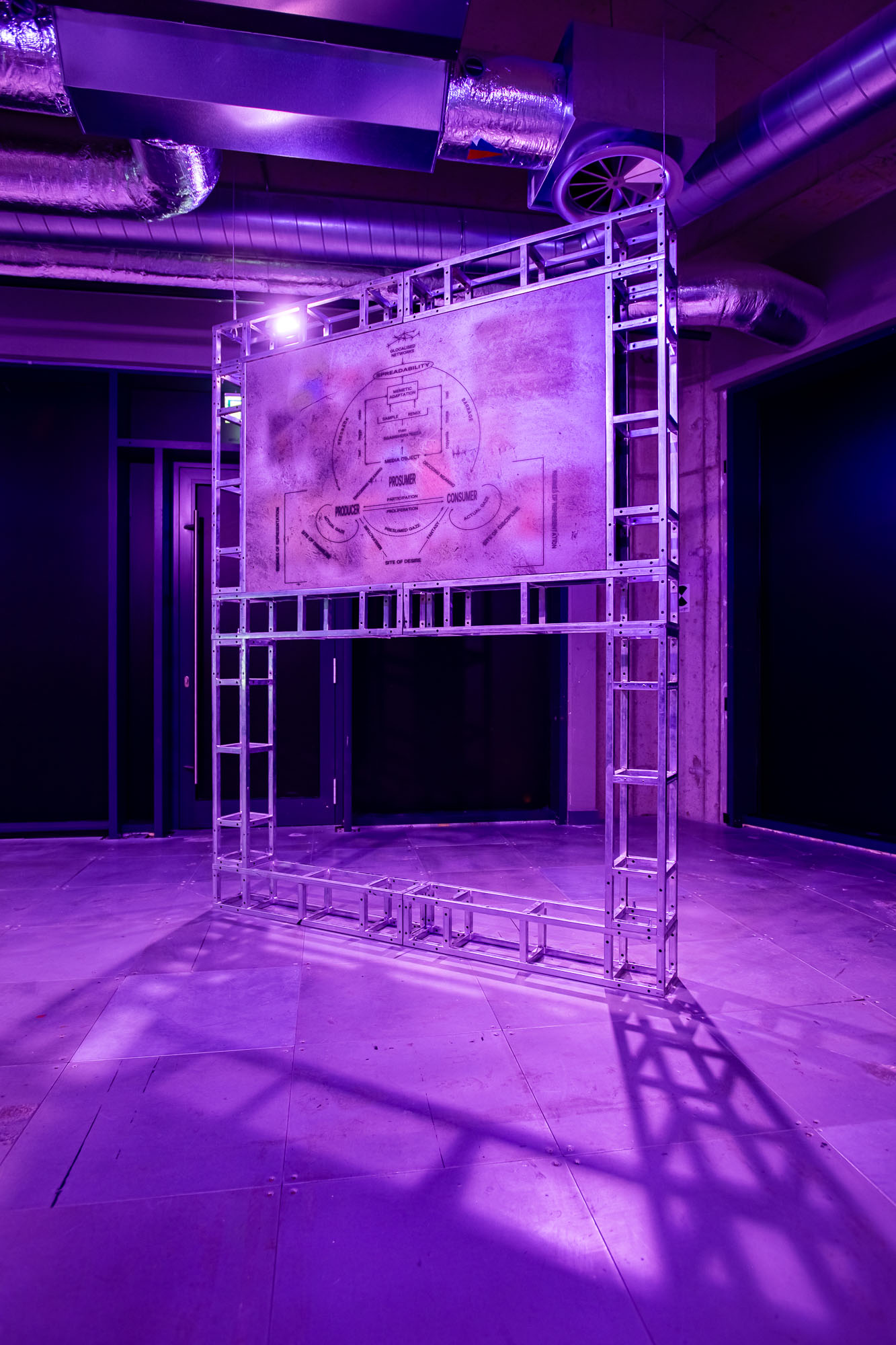
Alexandria’s Genesis, a solo show by British-Nigerian artist Dian Joy, examines how digital folklore shapes self-perception and social ideologies, with a particular focus on the role of the gaze in perpetuating myths about the body. Stemming from a widely circulated fanfiction-cum-copypasta entitled “Purple Eyes and Other Interesting Anomalies”, written in 1998 by Cameron Aubernon, the exhibition delves into the internet myth of Alexandria’s Genesis.


This viral lore describes an idealised genetic condition, marked by pale skin, purple eyes, extended lifespan, immunity to disease, and freedom from bodily waste, as well as unwanted hair growth. Although rooted in fiction, this myth gained widespread attention online, feeding a niche hysteria amongst those who believed they harboured this rare genetic code, and those who desired to embody its impossible traits.
Despite being debunked by medical journals, Alexandria’s Genesis continues to thrive on platforms like TikTok, where it circulates as both an absurd joke and a reminder of our deeper, more unsettling desires. As such, Alexandria’s Genesis has played a significant role in shaping and normalising ideologies that continue to support underlying legacies of racial superiority in the vernacular web.
Despite being debunked by medical journals, Alexandria’s Genesis continues to thrive on platforms like TikTok, where it circulates as both an absurd joke and a reminder of our deeper, more unsettling desires. As such, Alexandria’s Genesis has played a significant role in shaping and normalising ideologies that continue to support underlying legacies of racial superiority in the vernacular web.

Through an interdisciplinary approach that includes filmmaking, animation, and archival research, Dian Joy traces the roots of this myth, utilising post-cinematic forms of affect to explore how new media technologies harness the gaze as a disciplinary force to shape both individual selfhood and collective belief systems. By delving into these structures of seeing and being seen, Alexandria’s Genesis challenges us to question how contemporary communication technologies perpetuate desires for unattainable, often dangerous, and always racialised ideals of the body.


Alexandria’s Genesis forms part of arebyte’s artistic focus for 2023/26 themed The Body, The Mind, The Soul, an exploration of the complex nature of humanity in the realm of technological progress. The exhibition is the culmination of hotel generation, an yearly artist development programme mentoring the next generation of UK digital artists and whose 2024 edition was awarded to Dian Joy.

Dian Joy, Alexandria's Genesis, 2024. Installation view, arebyte Gallery, London. Image: Devika Bilimoria.